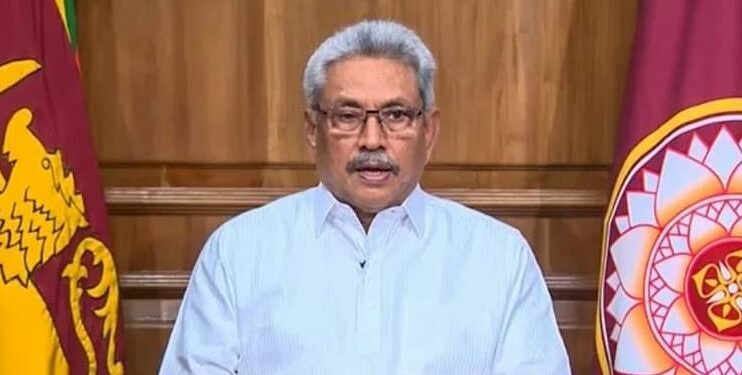
Gotabaya & Co: Meteoric rise and sharp fall of 7 dictators in 5 decades
The regimes of Ferdinand Marcos of the Philippines, Hosni Mubarak of Egypt, Nicolae Ceaușescu of Romania, Idi Amin of Uganda, Muammar Gaddafi of Libya and Pervez Musharraf of Pakistan, like that of the former Lankan President, met ignominious ends

Once the hero in the eyes of the majority Sinhalese for ending the war with the LTTE, former Sri Lankan President Gotabaya Rajapaksa ended up being the villain as he became the target of public ire for pushing the country into unprecedented economic crisis. So intense was the anger against him that he had to flee Sri Lanka in the middle of the night, first to the Maldives and then to Singapore, even as protesters occupied the presidential palace, pressing for his resignation. The war hero was so afraid to face his people that he sent in his resignation from far away Singapore.
Gotabaya is not the first such leader to have fallen out of people’s favour. Recent history is replete with such examples. In the last 50 years many dictators have had to suffer ignominious fall from power. Like Gotabaya, they were ousted following widespread public protests — Ferdinand Marcos of the Philippines, Hosni Mubarak of Egypt and Nicolae Ceaușescu of Romania. Some lost power because of a combination of internal strife and external intervention — Idi Amin of Uganda and Muammar Gaddafi of Libya. And there was Pervez Musharraf of Pakistan who went into exile as an impeachment motion against him gathered steam.
It is worth noting that almost all of these leaders had an army background.
Mubarak’s ouster, beginning of Arab Spring
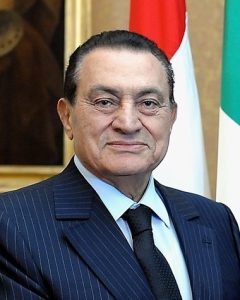
Muhammad Hosni El Sayed Mubarak served as the fourth president of Egypt, from 1981 to 2011.
Though there was stability during his regime and the country saw good economic growth, Mubarak’s rule was repressive.
Things came to a head in 2011, triggering a widespread uprising. Mubarak had to step down and flee the country after 18 days of demonstrations and the authority to rule was transferred to the Supreme Council of the Armed Forces.
He returned to Egypt and was put on trial on charges of negligence for failing to halt the killing of peaceful protesters during the revolution. After a spell in prison, in March 2017, Mubarak was acquitted by the Court of Cassation.
Marcos, the embezzler
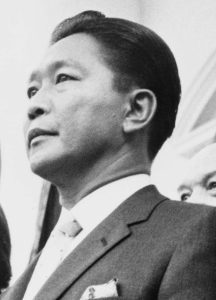
Ferdinand Emmanuel Marcos was the 10th president of the Philippines, from 1965 to 1986. Marcos gained political success by claiming to have been the “most decorated war hero in the Philippines”, but many of his claims were later found to be false.
Marcos placed the Philippines under martial law in 1972, shortly before the end of his second term. He revised the constitution and used repression against opponents. The media was silenced while violence and oppression were used against political opposition.
He was deposed in 1986 following a popular uprising. He fled the Philippines along with his family to Hawaii in the US.
According to official documents, the Marcos family stole $5 billion-10 billion from the Philippine central bank and Marcos and his wife Imelda enjoyed a decadent lifestyle. Imelda Marcos later became infamous for her $7 million shopping sprees and 3,000 pairs of shoes.
Ceausescu, caught while fleeing
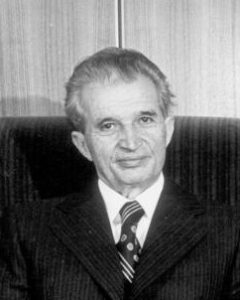
Nicolae Ceaușescu was the general secretary of the Romanian Communist Party from 1965 to 1989, and head of state from 1967. He served as president and was overthrown as people rose against him.
Ceaușescu and his wife Elena fled the capital in a helicopter, but they were captured by the military after the armed forces defected. After being tried and convicted of economic sabotage and genocide, both were sentenced to death and were executed by a firing squad on December 25, 1989.
He had led a totalitarian government — his secret police, the Securitate, was responsible for severe repression and human rights abuses and it controlled the media and press. Economic mismanagement due to failed oil ventures in the 1970s led to skyrocketing foreign debts for Romania. It eventually ended in his overthrow.
Gaddafi, lynched to death
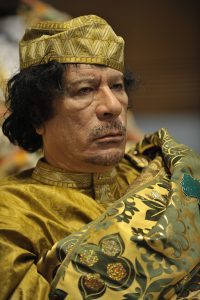
Muammar Muhammad al-Gaddafi was Libya’s ruler from 1969 to 2011. Gaddafi ruled by decree and deported Libya’s Italian population and ejected its Western military bases. Over time, a hostile relationship developed with Israel, the US and the UK, resulting in the 1986 US bombing of Libya and UN–imposed economic sanctions
In the 2011 Arab Spring, people protested against the Gaddafi regime’s widespread corruption, patronage and the nation’s unemployment.
The situation descended into civil war, in which NATO intervened militarily on the side of the opposition. Gaddafi’s government was overthrown; he retreated to Sirte in the west.
Gaddafi was hiding inside a drainage pipe when the rebels captured him. He was mercilessly lynched.
Idi Amin, the Ugandan despot

Idi Amin Dada Oumee was the third president of Uganda, ruling from 1971 to 1979, having come to power in a military coup.
He was a dictator and is considered one of the most brutal despots in world history. Amin’s rule was marked by largescale human rights abuses. An estimated five lakh people were killed under his regime.
In 1978, he went to war with neighbouring Tanzania in an attempt to annex Tanzania’s Kagera region. Tanzanian president Julius Nyerere ordered his troops to invade Uganda in response and, in April 1979, the Tanzanian army and rebel forces captured the Ugandan capital of Kampala.
Amin went into exile, first in Libya, then Iraq, and finally in Saudi Arabia, where he lived until his death on August 16, 2003.
Saddam Hussein, caught in a hole
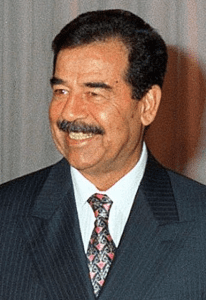
Saddam Hussein Tikriti was the fifth president of Iraq, from 1979 till 2003.
Several analysts have described his government as totalitarian, though many have contested the label. Saddam’s rule was reportedly marked by numerous human rights abuses, including an estimated 250,000 arbitrary killings and invasions of neighbouring Iran and Kuwait.
In 2003, a US-led coalition invaded Iraq to depose Saddam following Iraq’s invasion of Kuwait, accusing – falsely as it was revealed later — Iraq of possessing weapons of mass destruction.
After the fall of Baghdad, Saddam’s whereabouts remained a mystery. Finally, on December 13, 2003, he was captured by American forces after being found hiding in a hole in the ground near a farmhouse in ad-Dawr, near the northern Iraqi city of Tikrit.
Three years later, on November 5, 2006, Saddam was convicted by an Iraqi court of crimes against humanity related to the 1982 killing of 148 Iraqi Shia and sentenced to death by hanging. He was executed on December 30, 2006.
Musharraf, declared an absconder

Pervez Musharraf became the 10th president of Pakistan after the successful military takeover of the federal government in 1999. He served as chief of army from 1998 to 2007 and held the presidency from 2001 until 2008, when he tendered his resignation to avoid impeachment.
Musharraf’s position weakened dramatically in March 2007, when he approved suspension of the chief justice of Pakistan, Iftikhar Muhammad Chaudhry. The suspension evoked a nationwide popular mass protest movement by lawyers. By May, protesters and opposition parties were taking out huge rallies against Musharraf, and his tenure as army chief was also challenged in the courts.
Tendering his resignation to avoid impeachment in 2008, Musharraf emigrated to London in a self-imposed exile. He returned to Pakistan in 2013 to participate in that year’s general election, but was disqualified from doing so after the country’s high courts issued arrest warrants for him for alleged involvement in the assassinations of Nawab Akbar Bugti and Benazir Bhutto.
In 2017, Musharraf was declared an “absconder” in the Bhutto assassination case as he had moved to Dubai. He is seriously ill, battling Amyloidosis, a rare disease during which an abnormal protein builds up in one’s organs, affecting their shape and functioning.

